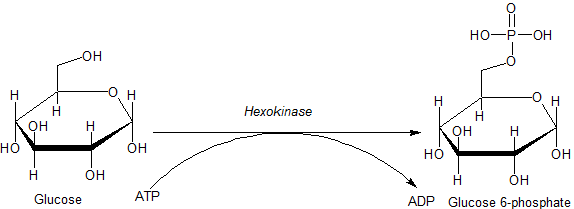|
Hexokinase Deficiency
Hexokinase deficiency is an anemia Anemia or anaemia (British English) is a blood disorder in which the blood has a reduced ability to carry oxygen due to a lower than normal number of red blood cells, or a reduction in the amount of hemoglobin. When anemia comes on slowly, ...-causing condition associated with inadequate hexokinase. Specifically, the HK1 isozyme is involved. An acronym for hexokinase deficiency is HK deficiency, and it is a genetic disease. The person must be homozygous for the trait, as being heterozygous would just make the person a carrier of that mutated gene. The cause of hexokinase deficiency is linked to mutations of the HK gene and the encoding of the HK enzyme. The result of the mutations lead to reduction in HK activity. See also * List of hematologic conditions References External links {{Inborn errors of carbohydrate metabolism Hereditary hemolytic anemias Inborn errors of carbohydrate metabolism ... [...More Info...] [...Related Items...] OR: [Wikipedia] [Google] [Baidu] |
Anemia
Anemia or anaemia (British English) is a blood disorder in which the blood has a reduced ability to carry oxygen due to a lower than normal number of red blood cells, or a reduction in the amount of hemoglobin. When anemia comes on slowly, the symptoms are often vague, such as tiredness, weakness, shortness of breath, headaches, and a reduced ability to exercise. When anemia is acute, symptoms may include confusion, feeling like one is going to pass out, loss of consciousness, and increased thirst. Anemia must be significant before a person becomes noticeably pale. Symptoms of anemia depend on how quickly hemoglobin decreases. Additional symptoms may occur depending on the underlying cause. Preoperative anemia can increase the risk of needing a blood transfusion following surgery. Anemia can be temporary or long term and can range from mild to severe. Anemia can be caused by blood loss, decreased red blood cell production, and increased red blood cell breakdown. Cau ... [...More Info...] [...Related Items...] OR: [Wikipedia] [Google] [Baidu] |
Hexokinase
A hexokinase is an enzyme that phosphorylates hexoses (six-carbon sugars), forming hexose phosphate. In most organisms, glucose is the most important substrate for hexokinases, and glucose-6-phosphate is the most important product. Hexokinase possesses the ability to transfer an inorganic phosphate group from ATP to a substrate. Hexokinases should not be confused with glucokinase, which is a specific isoform of hexokinase. All hexokinases are capable of phosphorylating several hexoses but glucokinase acts with a 50-fold lower substrate affinity and its main hexose substrate is glucose. Variation Genes that encode hexokinase have been discovered in every domain of life, and exist among a variety of species that range from bacteria, yeast, and plants to humans and other vertebrates. They are categorized as ''actin fold'' proteins, sharing a common ATP binding site core that is surrounded by more variable sequences which determine substrate affinities and other properties. ... [...More Info...] [...Related Items...] OR: [Wikipedia] [Google] [Baidu] |
List Of Hematologic Conditions
:''This is an incomplete list, which may never be able to satisfy certain standards for completion.'' There are many conditions of or affecting the human hematologic system—the biological system that includes plasma, platelets, leukocytes, and erythrocytes, the major components of blood and the bone marrow. Anemias An anemia is a decrease in number of red blood cells (RBCs) or less than the normal quantity of hemoglobin in the blood.MedicineNet.com Definition of Anemia Last Editorial Review: 12/9/2000 Retrieved March 27, 2011''Merriam-Webster Dictionary'' anemia Retrieved on March 27, 2011 However, it can include decrease ... [...More Info...] [...Related Items...] OR: [Wikipedia] [Google] [Baidu] |
Hereditary Hemolytic Anemias
Heredity, also called inheritance or biological inheritance, is the passing on of traits from parents to their offspring; either through asexual reproduction or sexual reproduction, the offspring cells or organisms acquire the genetic information of their parents. Through heredity, variations between individuals can accumulate and cause species to evolve by natural selection. The study of heredity in biology is genetics. Overview In humans, eye color is an example of an inherited characteristic: an individual might inherit the "brown-eye trait" from one of the parents. Inherited traits are controlled by genes and the complete set of genes within an organism's genome is called its genotype. The complete set of observable traits of the structure and behavior of an organism is called its phenotype. These traits arise from the interaction of its genotype with the environment. As a result, many aspects of an organism's phenotype are not inherited. For example, suntanned skin ... [...More Info...] [...Related Items...] OR: [Wikipedia] [Google] [Baidu] |


